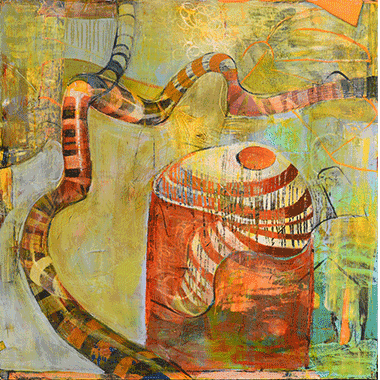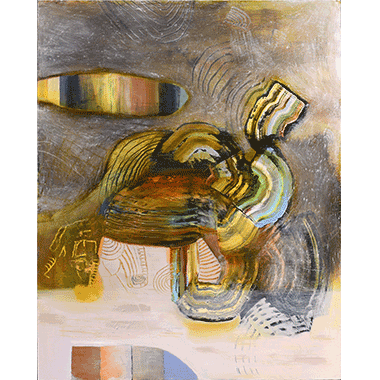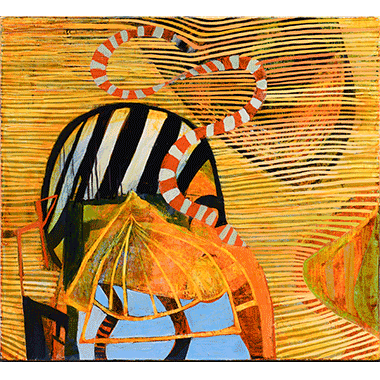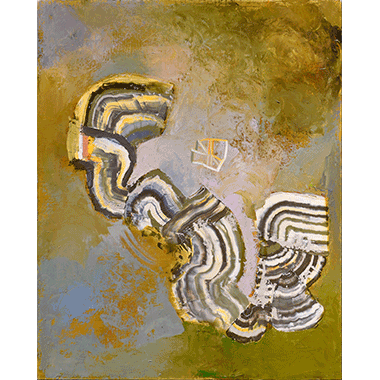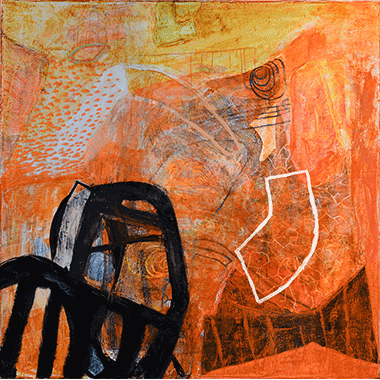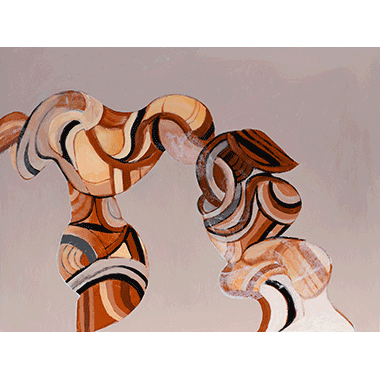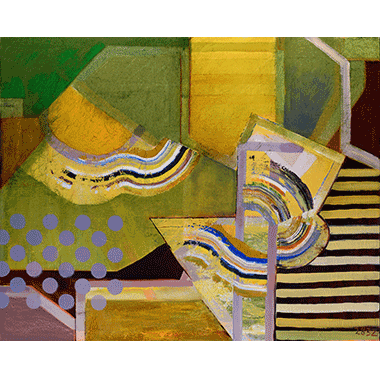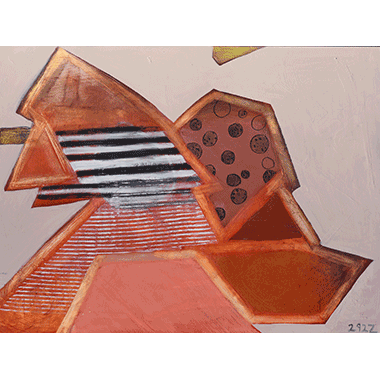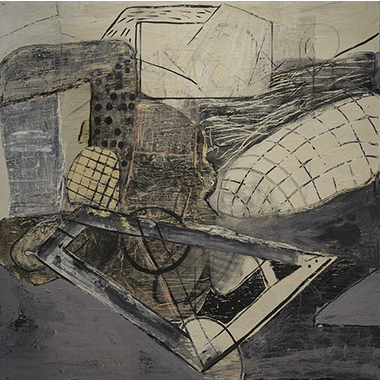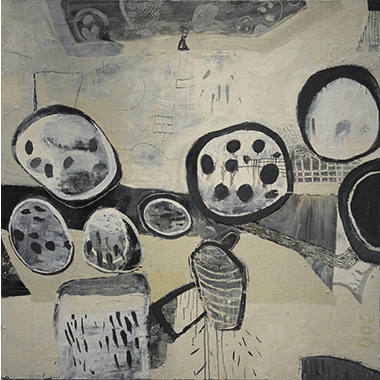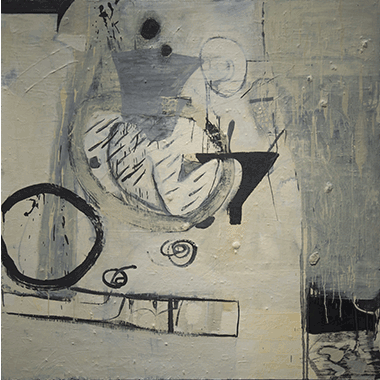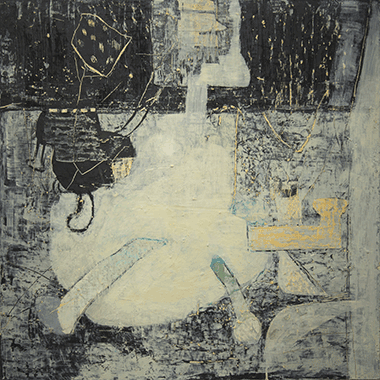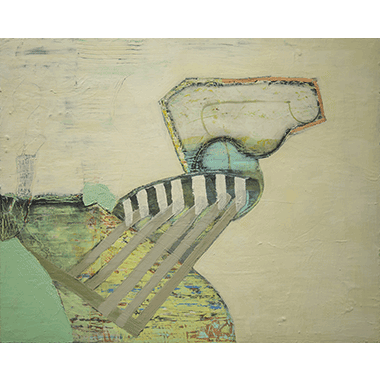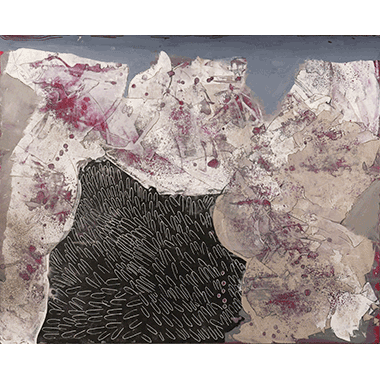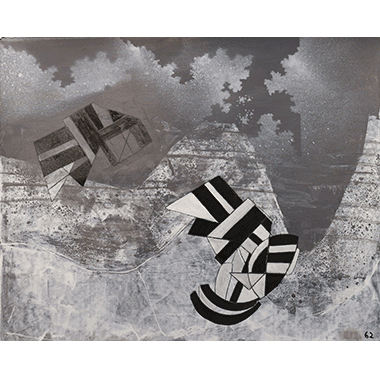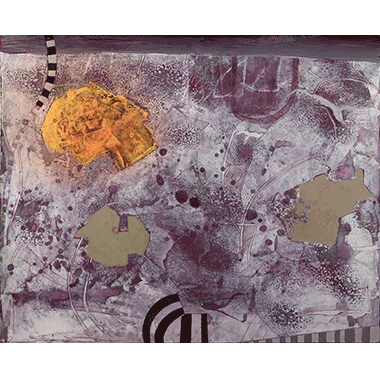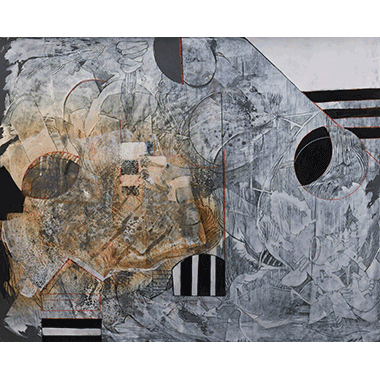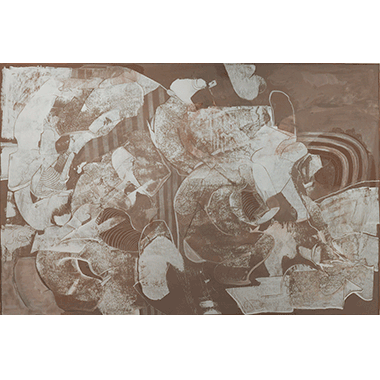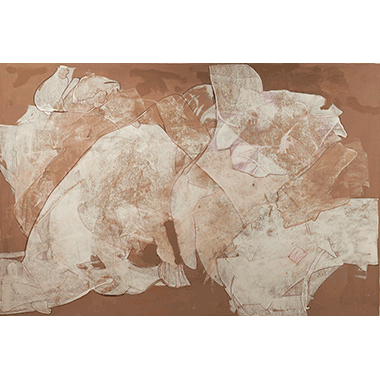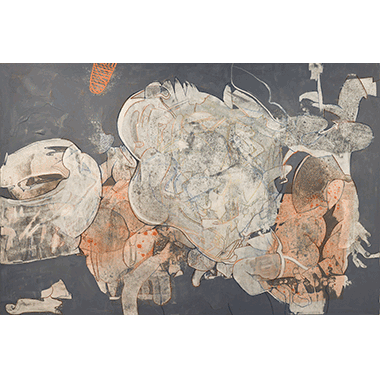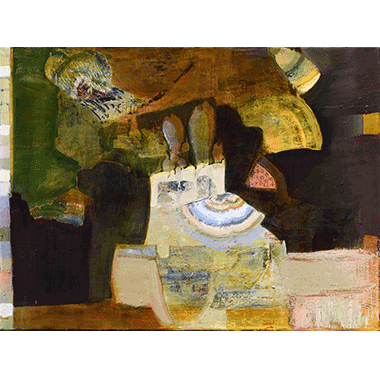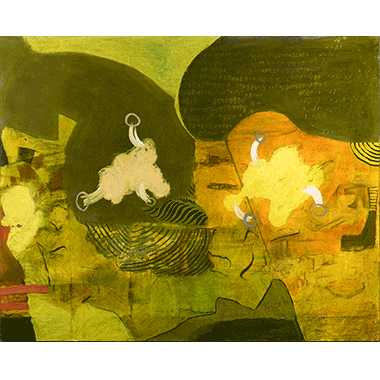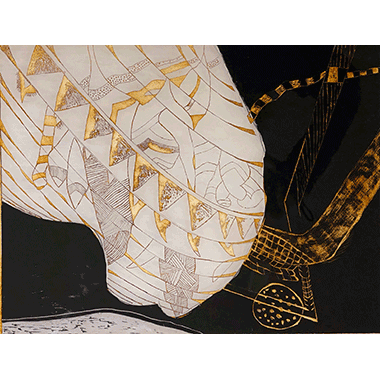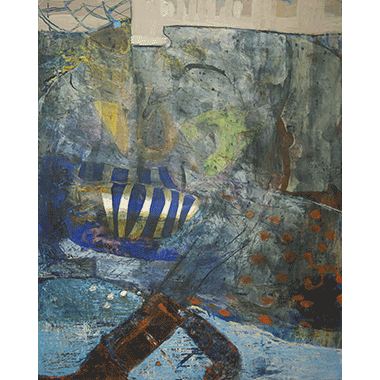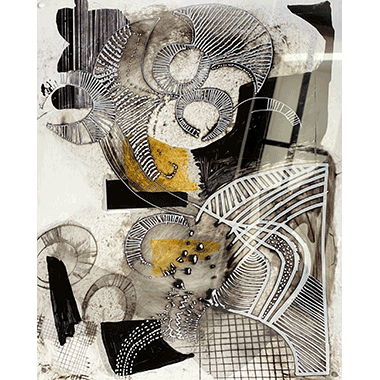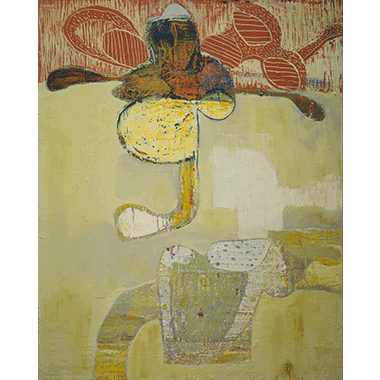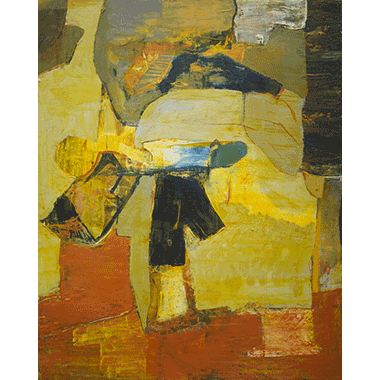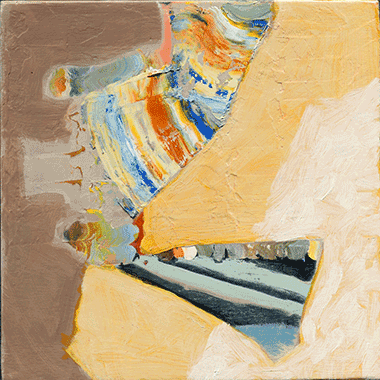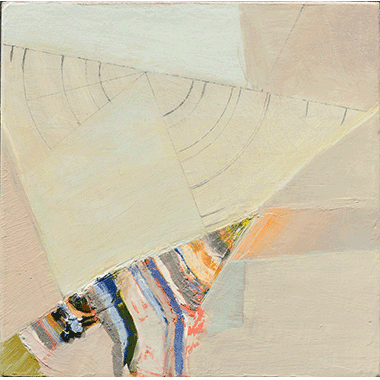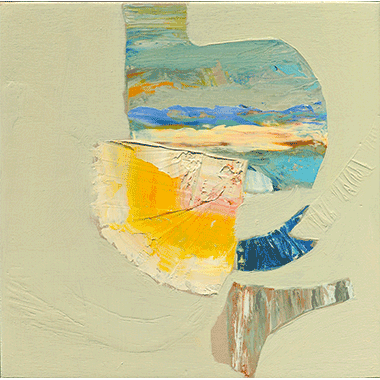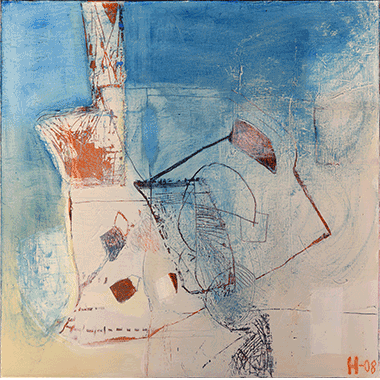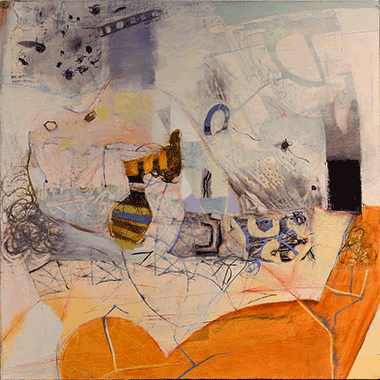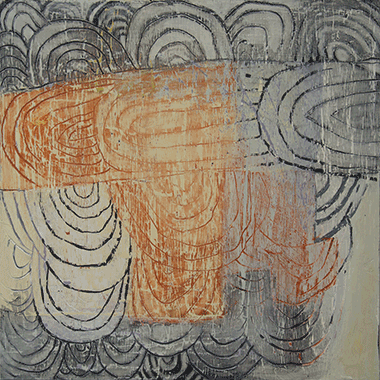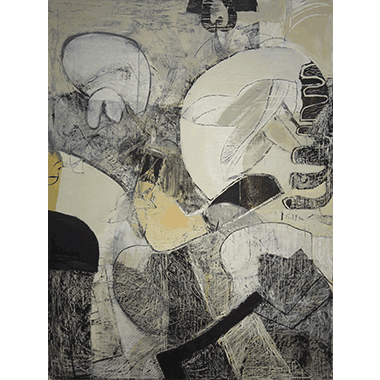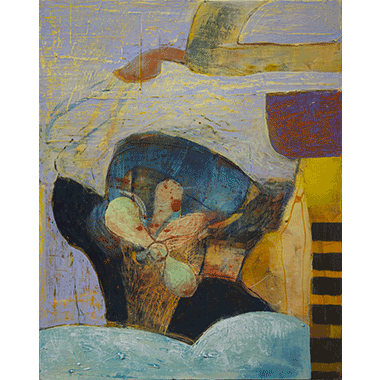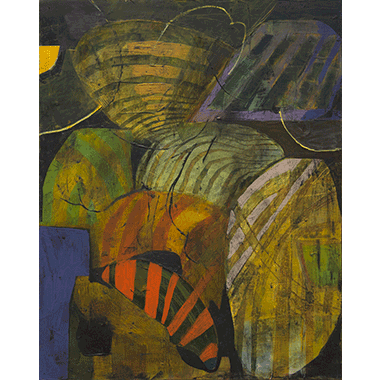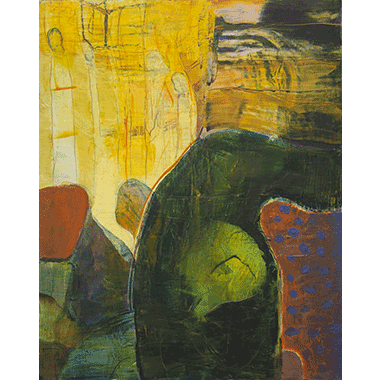HARRIET YALE RUSSELL
About Harriet Yale Russell
1939 - 2023
As a child, Harriet Yale Russell sat with her mother the painter, watching with fascination as she brushed watercolors across flat surfaces to make pictures. Soon, young Harriet took up her own brush and began to paint alongside her mother. To Harriet, painting was the most natural act in the world. “I was born to it,” she says. “I thought that’s what we were supposed to do.”
What the budding artist saw on the outside inspired her, but what she felt on the inside moved her, and continues to drive her today. The innate desire to create, to explore intangible feelings through tangible means, and to realize complex visions and dreams in two dimensions are the guideposts that loosely delineate Harriet Yale Russell’s work as an artist....
(continued)
Not satisfied by any one composition or series of paintings, Russell revels in the mystery and adventure of art making. Accepting the fact that she never quite knows where any one piece will take her, Russell finds the process of discovery to be the motivating force behind her work—its raison d’ệtre. “I think it’s the wonder of it, that you don’t know what you’re doing,” she says. Her thrill lies in continually searching for the right shape or color or combination thereof, and then in the momentary satisfaction as they coalesce in a visually and emotionally engaging manner.
Born and raised in Rochester, New York, Russell attended Colby-Sawyer College in New London, New Hampshire, where she earned a liberal arts degree. Though affection for fine art had pervaded her life to that point, Russell committed in earnest to her professional path in 1960 when she enrolled in the School of the Museum of Fine Arts, Boston. “I thought I had arrived in Heaven,” she says of her arrival there, where she immediately fell in love, surrounded by art, classical music, and the unabashed spirit of making art for the sake of art. She earned a diploma with distinction from the Museum School, and would continue to teach there for another ten years.
Russell spent the following two decades teaching, painting, and showing her work throughout New Hampshire, where she had moved, and also in New York, Boston, and at the Smithsonian Museum in Washington, D.C. Eventually, she decided to expand her formal training and her geographic paradigm, and enrolled in the San Francisco Art Institute, where she earned her MFA in 1994. Soon after, she relocated once again, this time to New Mexico, where she lives and works today.
“Life goes on, and certain things stick out and inspire you,” says Russell. Frequently garnering subject matter from an ongoing narrative in her head—both waking thoughts and dreams—she also responds to her surroundings. Her work, in turn, becomes the physical representation of what she sees or experiences or wonders. It contains unique, nonrepresentational subject matter, which is at once personal to her and universal to viewers. Likewise, Russell’s paintings are informed by her strong sense of design, rooted in traditional aesthetic principles.
Russell has always painted in a nonrepresentational style that both examines and celebrates relationships between formal elements on the X, Y, and Z axes. Shapes emerge and recede, collide and disengage, not simply across a singular surface, but among the many levels assembled, disassembled, and ultimately revealed within the picture plane. As such, she creates a micro-universe of infinite possibilities.
Further, Russell’s paintings address the dissection of her thoughts in layers of pigment and marks that also denote strata of reality in a world all their own. Each layer is a window into another. Compositional segments are disparate yet cohesive, not unlike variable regions on a map that come together to create a unified whole.
Russell’s numerous art-world influences include the work of Richard Diebenkorn and William Kentridge, in addition to the richly colored miniature manuscript paintings of India. The India manuscripts, in particular, have inspired her continued exploration of lush, vibrant color. “I’m interested in potency,” says the artist of her color surveys, which run the gamut from a collection of bold hues to a more limited palette.
Russell maintains hands-on contact with her medium at every stage of the creative process, even making her own paint. When it’s time to work, she often begins painting directly on the canvas without any preliminary work. This approach preserves a sense of spontaneity, while also allowing the artist to explore her vision freely—or be led by the paint as she applies it. “You either tell the painting where it’s going, or it tells you,” she says.
Russell, who refers to herself as “a drawer,” places paramount importance on the act of mark making and her physical connection with the materials she uses. She considers her marks not only visual articulations, but also physical elements that encompass all of history, carrying on the lineage of humans’ ancient need to draw—as a means to record and preserve, as well as a fundamental mode of expression. “The whole idea of mark making is so deep in the human race,” says Russell, as she strives to communicate via the pure physicality of her medium.
The concept of excavation looms large in Russell’s work as it relates to the many layers of pigment entwined on the canvas, as well as to the layers of history present in her actions. Russell loves to manipulate pigments (sometimes infused with cold wax), building them up and scraping back through to reveal a glimpse of what exists underneath.
For a time, Russell lived under Mesa de Cuba, an ancient sandstone formation near Santa Fe. The geological wonder, full of petrified wood and other relics of nature, led Russell to begin a new body of work especially focused on tactility and excavation. At the time, she wrote:
I awake in the morning looking out my bedside window at a three million year old mesa edge that looks like it was once mud poured out of a bucket. The old mesa looks like it froze, embedded in place. It looks like if it rained it would start flowing again. It looks soft and as if a child folded it with their small hands.
My paintings are done in layers of oil paint for color and wax for body. I like to carve them. I like the physicality. I like the excavation. I like the surprise when I hit color; it’s like mining.
Russell embraces the essential, timeless qualities of total abstraction contained within the formal elements from which she derives visual matter, even as she infuses her paintings with the deep, internal feeling that propelled her to pick up a paintbrush in the first place. “Ideally, I would like people who look at the painting to feel the emotion that went into the painting. I feel like that’s the artist’s mission,” says the artist, at the same time recognizing that viewers bring their own set of memories and experiences whenever they look at a piece of art. In this vein, Russell’s work emerges as a distinctive but universal aesthetic, void of geographic or personal reference, and capable of engaging on a visual as well as emotional level—perhaps inspiring introspection.
Russell’s artwork unequivocally reveals the human urge to create, to use visual means to attempt to understand the maelstrom of emotions constantly swirling around in our heads. It substantiates the desire at the core of humanity to make something that defines us as individuals, but also becomes something astounding for those on the outside.
“I think the gift is the curiosity,” Russell says of her art practice. More than a pursuit, it is the path that chose her, and one that she has followed with abandon for the span of her lifetime. It is a noble endeavor that defines her just as she defines it. “I’m basically looking for shapes,” she says, summing up a lifetime of looking and making and discovering. “I’m still looking for my shapes, and I will do that forever.”
Infinite Possibilites by Elizabeth L. Delaney
Reviews & Awards
2008
Albuquerque Museum, "Biennial Southwest," 2008 Curator's Choice Award, Painting.
2006
"Buried Secrets' Shows Energy, Fresh Ideas," Wesley Pukkla, Albuquerque Journal, January 22, 2006.
1969
School of the Museum of Fine Arts, Boston, MA: Clarissa Bartlett Traveling Scholarship, one year travel in Portugal and France, 1969-1970.
1965
School fo the Museum of Fine Arts, Boston MA: 5th year certificate, teaching / fine art work, 1965.
Education
San Francisco Art Institute, San Francisco, CA: MFA in Painting, 1994.
School of the Museum of Fine Arts, Boston, MA: Diploma with distinction, 1960-1965.
Colby-Sawyer College, New London, NH: Liberal Arts Degree, 1958-1960.
2024
Looking and Seeing. Harriet Yale Russell: Sintra. John O’Hern
Evokation. For the One Left Dreaming: A Tribute Exhibition Honoring the Life and Art of Harriet Yale Russell
2023
Evokation. Listen to the Paint: Harriet Yale Russell
2021
Pasatiempo. Harriet Yale Russle at Evoke Contemporary. Michael Abatemarco
2018
Pasatiempo. Exhibitionism: Harriet Yale Russell at Evoke Contemporary. Michael Abatemarco








